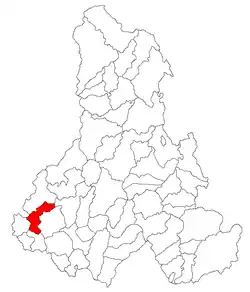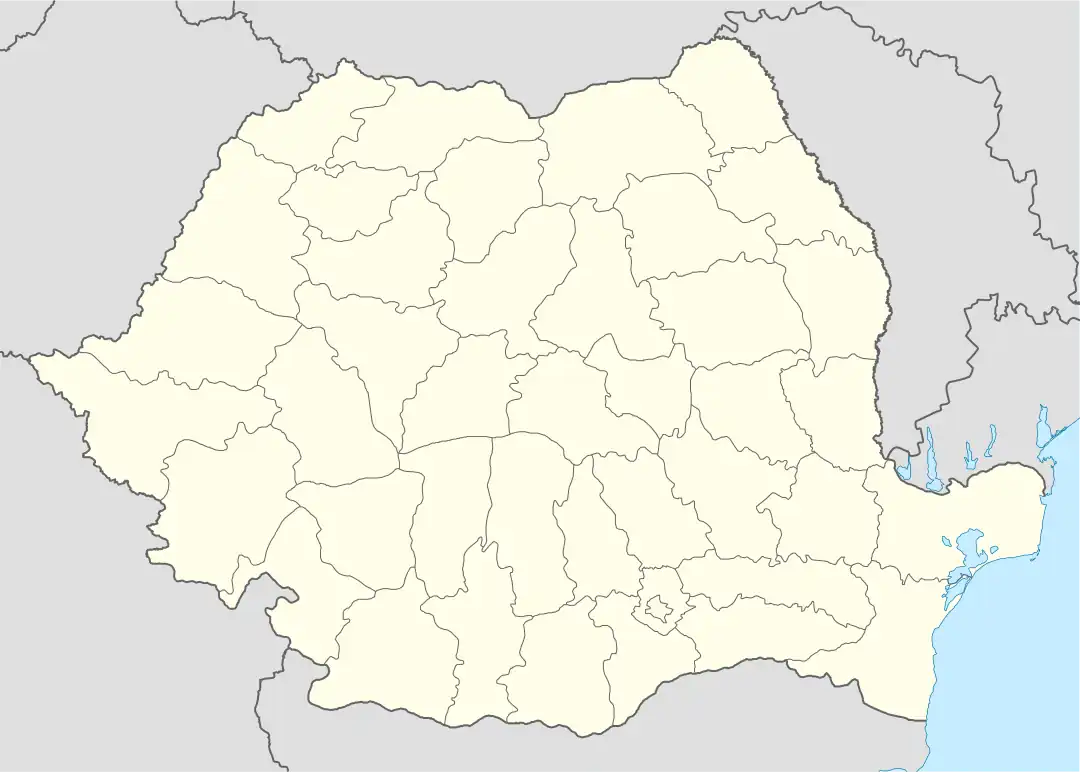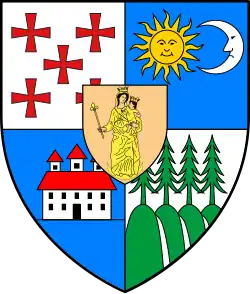Avrămești
Avrămești
Szentábrahám | |
|---|---|
.jpg) Municipal office | |
 Location in Harghita County | |
 Avrămești Location in Romania | |
| Coordinates: 46°20′N 25°01′E / 46.333°N 25.017°E | |
| Country | Romania |
| County | Harghita |
| Government | |
| • Mayor (2020–2024) | Dezső-Szabolcs Simó[1] (UDMR) |
Area | 28.19 km2 (10.88 sq mi) |
| Population (2021-12-01)[2] | 2,324 |
| • Density | 82/km2 (210/sq mi) |
| Time zone | EET/EEST (UTC+2/+3) |
| Postal code | 537010 |
| Area code | +40 266 |
| Vehicle reg. | HR |
| Website | www |
Avrămești (Hungarian: Szentábrahám, Hungarian pronunciation: [ˈsɛntɒbrɒhaːm], meaning "St. Abraham") is a commune in Harghita County, Romania. It lies in the Székely Land, an ethno-cultural region in eastern Transylvania.
Component villages
The commune is composed of eight villages:
| In Romanian | In Hungarian |
|---|---|
| Andreeni | Magyarandrásfalva |
| Avrămești | Szentábrahám |
| Cechești | Csekefalva |
| Firtănuș | Firtosmartonos |
| Goagiu | Gagy |
| Medișoru Mic | Kismedesér |
| Laz-Firtănuș | Firtosmartonosi Láz |
| Laz-Șoimuș | Solymosi Láz |
History
Before the 1876 administrative reform of Transylvania, the village formed part of the Székely seat of Udvarhelyszék, then becoming, until 1918, a part of Udvarhely County in the Kingdom of Hungary. After the Treaty of Trianon of 1920, it became part of Romania.
Demographics
At the 2011 census, the commune had a population of 2,465; out of them, 2,105 (85.4%) were Hungarian, 278 (11.3%) were Roma and 17 (0.7%) were Romanian.[3] 65% of the commune population are Unitarian, 17% are Reformed, 6% are Roman Catholic and 1% are Orthodox.[4]
References
- ^ "Results of the 2020 local elections". Central Electoral Bureau. Retrieved 10 June 2021.
- ^ "Populaţia rezidentă după grupa de vârstă, pe județe și municipii, orașe, comune, la 1 decembrie 2021" (XLS). National Institute of Statistics.
- ^ Tab8. Populaţia stabilă după etnie – judeţe, municipii, oraşe, comune, 2011 census results, Institutul Național de Statistică, accessed 19 February 2020.
- ^ Tab13. Populaţia stabilă după religie – judeţe, municipii, oraşe, comune, 2011 census results, Institutul Național de Statistică, accessed 19 February 2020.
External links
- Home page of the commune (in Hungarian)
